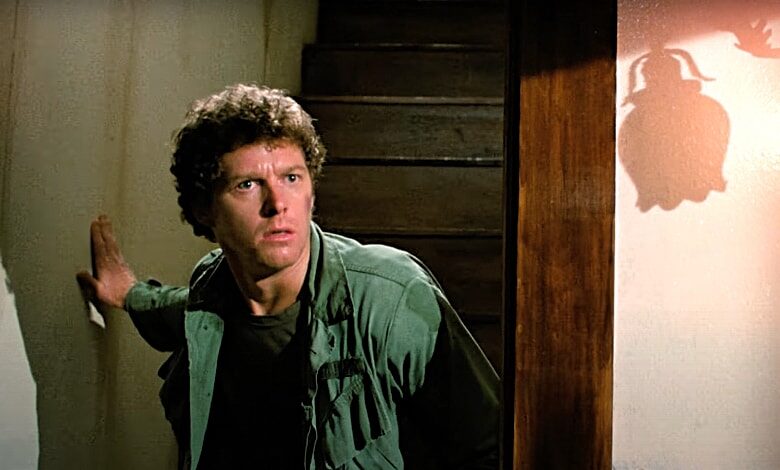
In Steve Miner’s “House” (1986), William Katt stars as Roger Cobb, a successful horror novelist whose marriage has ended after the disappearance of his son.
Devastated by the loss of his child and marriage dissolving, Cobb decides to move into his late aunt’s home to write an autobiographical work about his tour of duty in Vietnam. Over the course of a few nights, Cobb learns that the house he’s staying at is haunted and that his son may still be alive.
Miner’s film is in good company with George A. Romero’s “Creepshow” in terms of mood and the anything-goes ghoulish antics. What Miner’s film aspires to be is the kind of macabre nuttiness that defines a Sam Raimi film, though this is much closer to the Three Stooges-infused “Army of Darkness” (1993) than either of the earlier, far rougher “Evil Dead” installments.
It’s easily the strongest and most distinguished of Miner’s films and one of the best to emerge from Roger Corman’s New World Cinema.
RELATED: How ‘Terror in the Aisles’ Captured ’80s Horror
Katt, best known in the ’80s for playing the accident-prone “Greatest American Hero,” is effective playing a quasi-Stephen King stand-in. Like the author, they both live in looming Victorian mansions and write about entering alternate worlds.
George Wendt, the prolific actor who is best known as “Norm” from “Cheers,” is very good as Cobb’s alternatingly suspicious and star struck neighbor. Wendt is the New World Cinema equivalent of John Candy, which is fine, as his scenes give needed punch to some of the corniest set pieces.
Richard Moll plays the central villain and he’s somewhat effective playing the role, before the monster transformation of the third act undermines his performance. Genre legend Kane Hodder was among the stunt performers. Harry Manfredini’s solid score repeats some of his “Friday the 13th” sounds but is playful and hits new marks.
Sometimes the jokes arrive with too heavy a hand to land as lightly as they should. However, there’s a random craziness to the story, which is in full E.C. Comics mode and gives in to wacky story impulses.
Miner aims to keep the audience off guard and consistently succeeds.
The Vietnam subplot is among the most uneven touches, as those scenes in general appear to have been shot in either someone’s overgrown backyard foliage or a plant store. In addition to the unconvincing “jungle” milieu, these scenes set up the dramatic core of the story (Cobb’s inability to save a fellow soldier, who literally haunts him afterward) but don’t completely connect.
Far better is the even stranger plotline of how Cobb’s son didn’t so much as vanish as he fell into an alternate world through a portal in his swimming pool.
As far as the surreal touches go, none of this comes near the gonzo brilliance and disturbing visual dexterity of Nobuhiko Obayashi’s unrelated “Hausu” (1977). Yet, for an ’80s mainstream horror comedy, even the far more successful and slickly produced “Fright Night” (1985) played it safer in comparison.
There’s little gore but lots of rubber monsters, matte paintings, elaborate make-up and special effects creatures in “House,” which was a welcome contrast to where the teen slasher and horror genre in general was in 1986.
While the film lacks the more elaborate gore of, say, “Creepshow,” it also could have used that film’s self-aware visual style of a living comic book.
Miner clearly was thinking of William Gaines-published comic books (like “Tales from the Crypt”) when he made this and should have made a firmer connection.
“House” can be clunky and hit and miss at times, but for a movie that could have been a generic genre exercise, its admirably risk taking.
To give a clear example why this motley little genre work is really a sleeper, just look at the scene where Cobb climbs down a rope into pure darkness.
Cobb encounters a winged skull monster who takes his shotgun and gives it an Annie Oakley twirl before firing. It’s not the first time where “House” goes the extra mile, adding a quirky touch that gives it distinction.
Hardcore horror fans may balk that it wasn’t bloodier, but Miner’s film often scores by going into wild directions and successfully adding slapstick to a somber horror movie premise.
“House” and its 1987 sequel “House II: The Second Story” (1987) earn their cult movie longevity by adding true showmanship and unexpected humor to what could have just been another haunted house movie.
